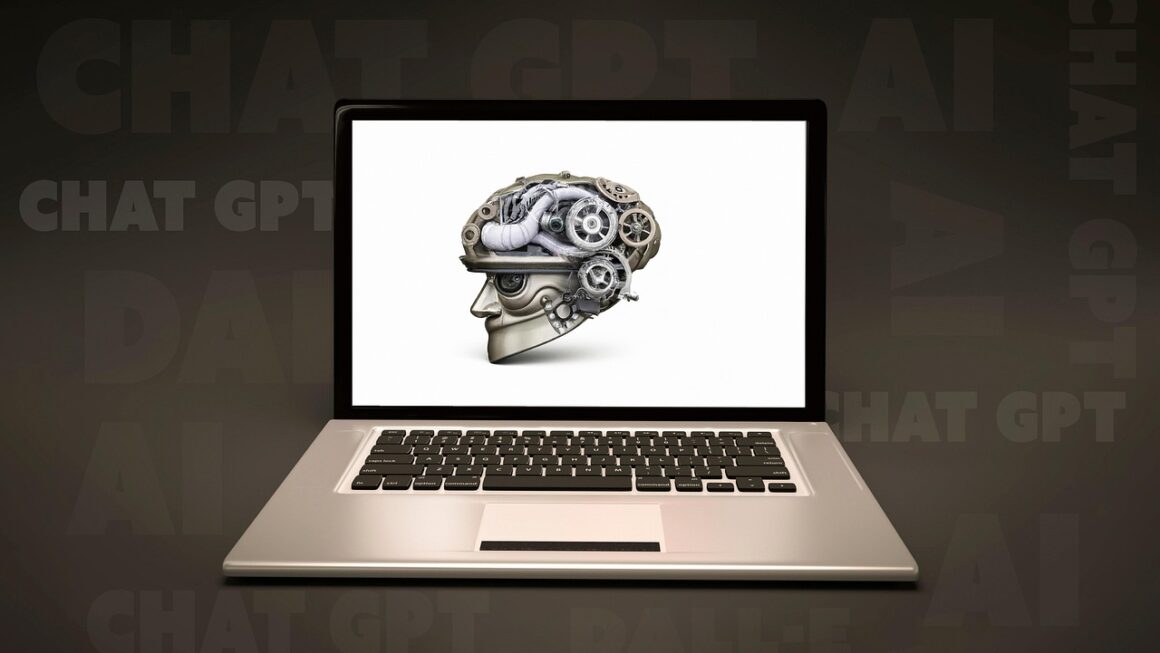Artificial intelligence (AI) is rapidly transforming industries and reshaping our world as we know it. From powering personalized recommendations to driving breakthroughs in healthcare, AI’s potential seems limitless. Staying ahead of the curve on the latest AI trends is crucial for businesses and individuals alike. This blog post will explore the most significant AI trends shaping the future, providing insights and actionable takeaways to help you navigate this exciting landscape.
The Rise of Generative AI
What is Generative AI?
Generative AI refers to AI models capable of creating new content, including text, images, audio, and video. Unlike traditional AI, which analyzes existing data, generative AI learns from data and then generates new, original content that resembles it. This is revolutionizing creative industries and beyond.
- Examples:
Large Language Models (LLMs): Models like GPT-4, LaMDA, and Bard are generating human-quality text for various applications, including content creation, chatbot development, and code generation.
Image Generators: Tools like DALL-E 2, Midjourney, and Stable Diffusion can create stunning and unique images from text prompts.
Audio Generators: AI tools are capable of composing music, generating sound effects, and even creating realistic voiceovers.
Practical Applications and Benefits
- Content Creation: Automate the creation of blog posts, marketing copy, social media content, and even entire books.
- Art and Design: Generate new artwork, design prototypes, and create visually appealing marketing materials.
- Software Development: Automate code generation, debugging, and testing processes, significantly speeding up development cycles.
- Personalized Experiences: Create personalized content, recommendations, and user interfaces tailored to individual preferences.
Key Takeaway:
Embrace generative AI tools to enhance your productivity, creativity, and innovation. Experiment with different platforms and identify use cases relevant to your specific needs.
AI-Powered Automation: Beyond Simple Tasks
The Evolution of Automation
AI-powered automation is moving beyond simple, repetitive tasks to handle more complex and nuanced processes. This involves combining AI techniques like machine learning, natural language processing, and computer vision to create intelligent automation solutions.
- Robotic Process Automation (RPA) 2.0: Integrates AI to handle unstructured data, make decisions, and adapt to changing circumstances.
- Intelligent Document Processing (IDP): Automates the extraction, classification, and processing of information from various document types.
- AI-Driven Customer Service: Chatbots and virtual assistants provide personalized and efficient customer support, resolving issues and answering questions in real-time.
Benefits of Intelligent Automation
- Increased Efficiency: Automate complex tasks, freeing up human employees to focus on higher-value activities.
- Improved Accuracy: Reduce errors and inconsistencies in data processing and decision-making.
- Enhanced Customer Experience: Provide faster and more personalized customer service.
- Cost Reduction: Lower operational costs through automation and improved resource utilization.
Practical Examples
- Automated Invoice Processing: Extract data from invoices, validate information, and automatically process payments.
- Personalized Customer Service: Use AI-powered chatbots to handle customer inquiries, resolve issues, and provide personalized recommendations.
- Supply Chain Optimization: Optimize inventory levels, predict demand, and automate logistics processes.
Key Takeaway:
Identify areas in your business where intelligent automation can streamline processes, improve efficiency, and enhance customer experiences.
AI in Healthcare: Transforming Patient Care
Advancements in Diagnostics and Treatment
AI is revolutionizing healthcare by enabling faster and more accurate diagnoses, personalized treatment plans, and improved patient outcomes.
- AI-Powered Diagnostics: Analyze medical images (X-rays, MRIs, CT scans) to detect diseases at an early stage.
- Drug Discovery and Development: Accelerate the drug discovery process by identifying potential drug candidates and predicting their efficacy.
- Personalized Medicine: Tailor treatment plans based on individual patient characteristics, such as genetics, lifestyle, and medical history.
- Remote Patient Monitoring: Monitor patients’ health remotely using wearable devices and AI-powered analytics, enabling proactive intervention.
Impact on Patient Outcomes
- Early Disease Detection: Improve survival rates through early detection of diseases like cancer and heart disease.
- Reduced Medical Errors: Minimize human error in diagnosis and treatment through AI-powered decision support systems.
- Improved Patient Engagement: Enhance patient engagement and adherence to treatment plans through personalized communication and support.
- Enhanced Efficiency: Streamline administrative tasks and improve the efficiency of healthcare providers.
Practical Examples
- AI-Powered Cancer Detection: Analyze mammograms to detect breast cancer with greater accuracy.
- Personalized Diabetes Management: Use AI to analyze glucose levels and provide personalized recommendations for diet and exercise.
- Remote Patient Monitoring for Chronic Diseases: Monitor patients with heart failure remotely, detecting early signs of deterioration and preventing hospital readmissions.
Key Takeaway:
Explore how AI can enhance your healthcare practices, improve patient outcomes, and drive innovation in the industry.
Edge AI: Bringing Intelligence Closer to the Data
What is Edge AI?
Edge AI involves processing AI algorithms locally on devices, rather than relying on cloud-based servers. This enables faster response times, reduced latency, and enhanced privacy.
- Benefits:
Reduced Latency: Process data locally, eliminating the need to send data to the cloud and back, resulting in faster response times.
Enhanced Privacy: Keep sensitive data on-device, reducing the risk of data breaches and ensuring compliance with privacy regulations.
Improved Reliability: Operate independently of network connectivity, ensuring continuous operation even when the internet is unavailable.
Reduced Bandwidth Costs: Minimize data transfer to the cloud, reducing bandwidth costs and improving network efficiency.
Applications of Edge AI
- Autonomous Vehicles: Enable real-time decision-making for self-driving cars, such as obstacle detection and navigation.
- Smart Manufacturing: Optimize production processes, detect anomalies, and improve quality control in real-time.
- Smart Cities: Enhance public safety, optimize traffic flow, and improve energy efficiency.
- Retail: Personalize customer experiences, optimize inventory management, and prevent shoplifting.
Practical Examples
- Facial Recognition: Implement facial recognition systems for security and access control without relying on cloud-based servers.
- Predictive Maintenance: Analyze sensor data from industrial equipment to predict failures and schedule maintenance proactively.
- Smart Security Cameras: Detect suspicious activity and alert security personnel in real-time.
Key Takeaway:
Consider implementing Edge AI solutions to improve performance, enhance privacy, and reduce costs in applications where real-time processing and data security are critical.
Responsible AI: Addressing Ethical Concerns
The Importance of Ethical AI
As AI becomes more pervasive, it’s crucial to address ethical concerns such as bias, fairness, transparency, and accountability. Responsible AI ensures that AI systems are developed and deployed in a way that benefits society and minimizes potential harms.
- Key Principles of Responsible AI:
Fairness: Ensure that AI systems do not discriminate against certain groups or individuals.
Transparency: Make AI systems understandable and explainable, so users can understand how they work and make informed decisions.
Accountability: Establish clear lines of responsibility for the development and deployment of AI systems.
Privacy: Protect sensitive data and ensure compliance with privacy regulations.
Safety: Ensure that AI systems are safe and do not pose a risk to human health or safety.
Mitigating Bias in AI
- Diverse Data: Use diverse and representative datasets to train AI models, minimizing bias and ensuring fairness.
- Bias Detection Tools: Employ tools to detect and mitigate bias in AI models.
- Algorithmic Audits: Conduct regular audits of AI algorithms to identify and address potential biases.
Ensuring Transparency and Accountability
- Explainable AI (XAI): Use techniques to make AI decisions more transparent and understandable.
- AI Governance Frameworks: Implement frameworks to govern the development and deployment of AI systems, ensuring ethical considerations are addressed.
- Human Oversight: Maintain human oversight of AI systems to prevent unintended consequences and ensure accountability.
Practical Examples
- Fair Lending Algorithms: Develop algorithms that do not discriminate against certain groups when making loan decisions.
- Transparent Chatbots: Provide explanations for chatbot responses, helping users understand how the AI system is making decisions.
- Ethical AI Training: Train employees on the ethical implications of AI and best practices for responsible AI development.
Key Takeaway:
Prioritize responsible AI practices to ensure that AI systems are fair, transparent, and accountable, minimizing potential harms and maximizing societal benefits.
Conclusion
Artificial intelligence is poised to continue its transformative journey across various industries and aspects of our lives. By understanding and embracing these emerging trends – from the creative power of generative AI and the efficiency of AI-powered automation to the life-saving potential of AI in healthcare, the localized intelligence of Edge AI, and the critical importance of Responsible AI – individuals and organizations can harness the power of AI to drive innovation, improve outcomes, and shape a better future. Staying informed and proactive is key to navigating this evolving landscape and realizing the full potential of artificial intelligence.




